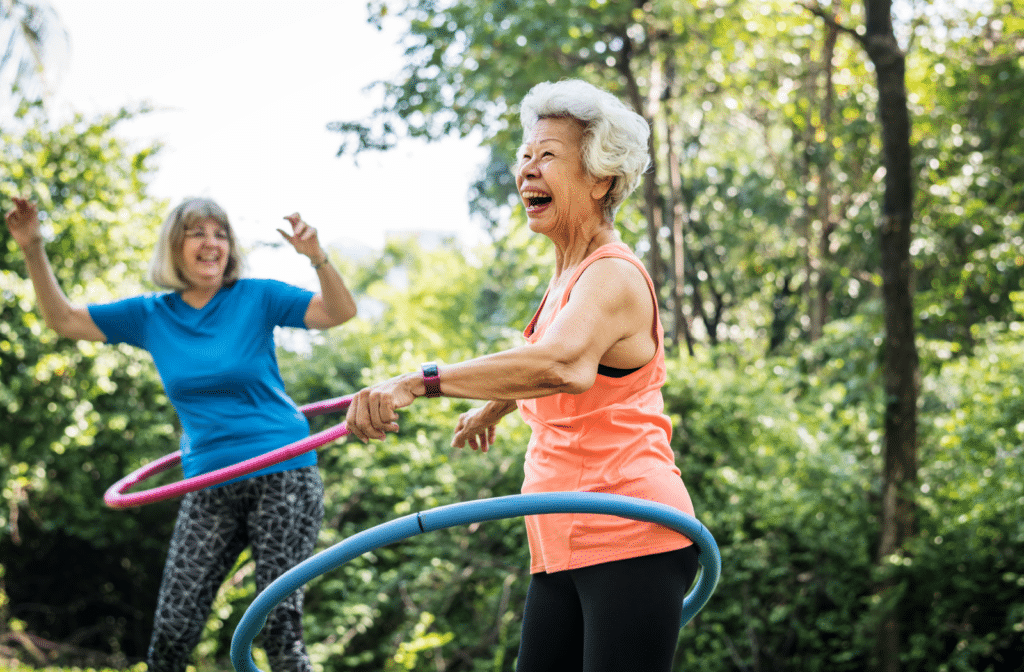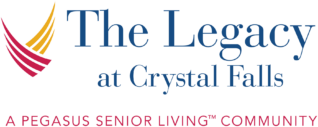Staying active is important at any age, but exercise becomes even more important as we age. Regular physical activity can enhance the quality of life for seniors, promoting better health, greater independence, and better mental health.
It’s generally recommended that adults aged 65+ years should exercise for about 2.5 hours each week. Our blog explains more about what this looks like and how Legacy at Crystal Falls can help.
Understanding the Importance of Physical Activity
Physical activity offers numerous benefits for seniors, including improved cardiovascular health, better balance and coordination, enhanced mood, and greater cognitive function. It also helps maintain a healthy weight, reduces the risk of chronic diseases such as diabetes and heart disease, and promotes overall longevity.
Long-Term Benefits of Exercise for Seniors
Exercise offers numerous long-term health benefits for seniors, positively impacting both physical and mental well-being. Here are some key benefits:
- Improved Cardiovascular Health: Regular exercise strengthens the heart and improves circulation, reducing the risk of cardiovascular diseases such as heart attacks and stroke.
- Enhanced Muscular Strength & Flexibility: Physical activity helps maintain and build muscle mass, which is crucial for mobility and preventing falls. Improved flexibility also aids in reducing stiffness and joint pain.
- Bone Health: Weight-bearing exercises, such as walking and resistance training, increase bone density, reducing the risk of osteoporosis and fractures.
- Weight Management: Exercise helps regulate weight by burning calories and increasing metabolism, which is essential for preventing obesity-related health issues like diabetes and hypertension.
- Better Balance & Coordination: Activities like yoga, tai chi, and balance training enhance stability, reducing the likelihood of falls and related injuries.
- Mental Health Benefits: Regular physical activity boosts mood, reduces symptoms of depression and anxiety, and improves overall mental health by increasing the release of endorphins.
- Cognitive Function: Exercise is linked to improved cognitive function, including better memory and reduced risk of cognitive decline and diseases such as Alzheimer’s.
- Chronic Disease Management: Regular exercise helps manage and mitigate symptoms of chronic conditions like arthritis, diabetes, and high blood pressure, improving quality of life.
- Enhanced Immune Function: Physical activity strengthens the immune system, making it easier for the body to fight off infections and diseases.
- Social Interaction: Group exercises and fitness classes provide opportunities for social engagement, reducing feelings of isolation and loneliness, which are common in older adults.
Recommended Physical Activity Guidelines for Seniors

The Centers for Disease Control and Prevention (CDC) and the American Heart Association (AHA) provide clear guidelines on how much physical activity older adults should aim for each week to achieve optimal health benefits.
Aerobic Activity
- Frequency: Seniors should aim for at least 150 minutes of moderate-intensity aerobic activity each week. This can be broken down into 30 minutes a day, five days a week.
- Types of Activities: Walking, swimming, cycling, and dancing are excellent options. These activities increase heart rate and improve cardiovascular health.
Muscle-Strengthening Activities
- Frequency: In addition to aerobic activity, seniors should engage in muscle-strengthening activities on 2 or more days a week.
- Types of Activities: Exercises such as lifting weights, using resistance bands, or practicing yoga can help build muscle strength and maintain muscle mass, which is essential for everyday activities and preventing falls.
Balance and Flexibility Exercises
- Frequency: Balance and flexibility exercises should be incorporated into the weekly routine at least 3 times a week.
- Types of Activities: Tai chi, stretching, and balance exercises can improve stability and reduce the risk of falls, which is particularly important for seniors.
Adapting Physical Activity to Individual Needs
Each individual has unique abilities and health considerations. It’s essential to tailor physical activity to individual needs and preferences. Here are some tips for adapting exercise routines:
- Start Slowly: If your loved one is new to exercise, start with shorter sessions and gradually increase the duration and intensity.
- Mix It Up: Incorporate a variety of activities to keep things interesting and engage different muscle groups.
- Stay Safe: Ensure exercises are performed safely and correctly to prevent injuries. Use supportive footwear and avoid slippery surfaces.
- Listen to Your Body: Encourage your loved one to pay attention to their body’s signals and rest if they feel pain or discomfort.
Engaging in Physical Activity at Legacy at Crystal Falls
Regular physical activity is vital for maintaining health and well-being in senior years. By following recommended guidelines and adapting activities to individual needs, seniors can enjoy the many benefits of an active lifestyle. At Legacy at Crystal Falls, we’re committed to fostering a supportive and engaging community where our residents can thrive through movement and connection.
Our community offers various opportunities for residents to stay active and healthy. From organized fitness classes to group walks and dance sessions, we create a vibrant environment that encourages movement and social interaction. Our team is dedicated to providing personalized support, ensuring each resident finds activities they enjoy and that suit their fitness level.
If you have any questions about incorporating physical activity into your loved one’s routine or want to learn more about our programs, please reach out to our team.
